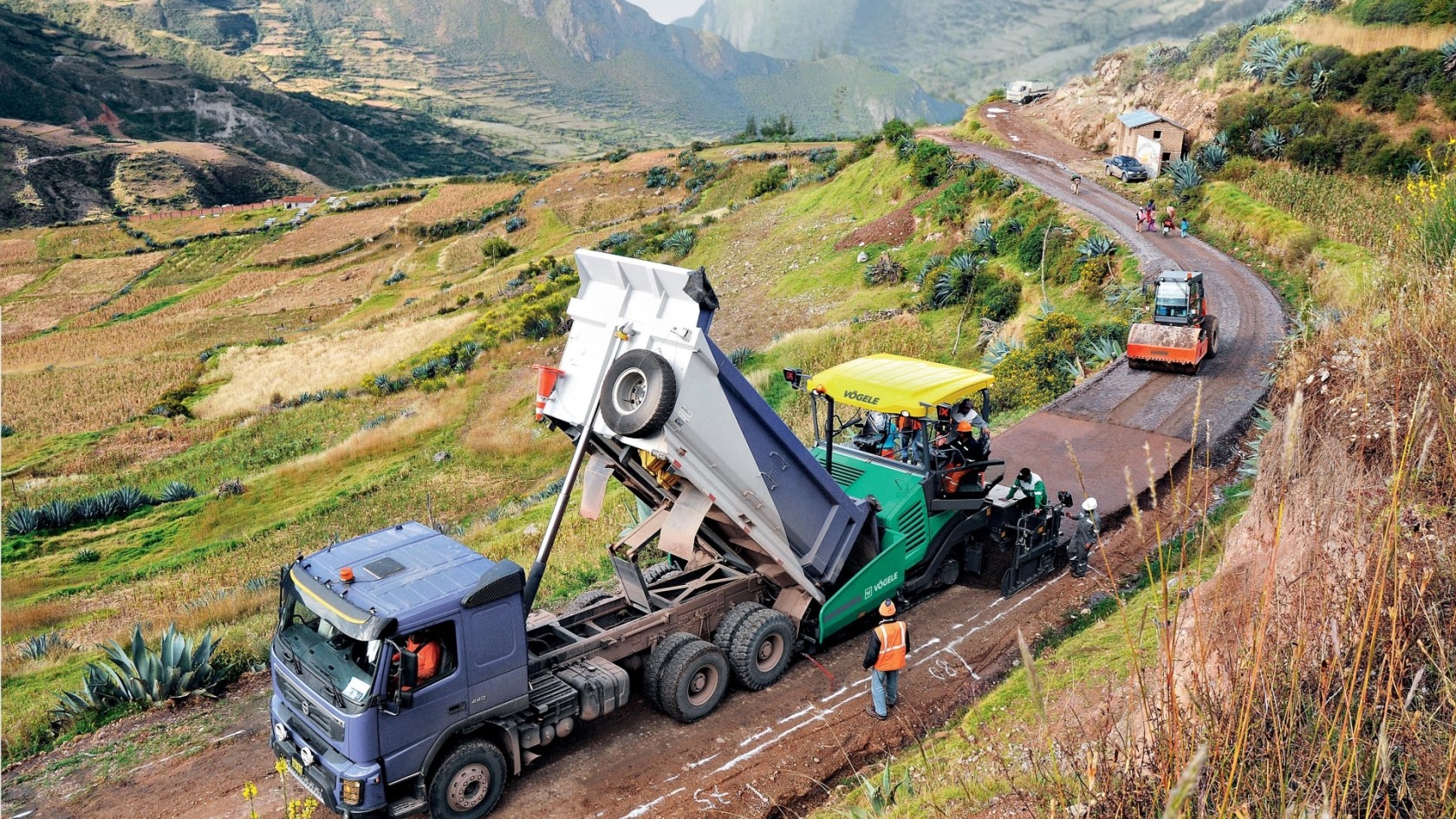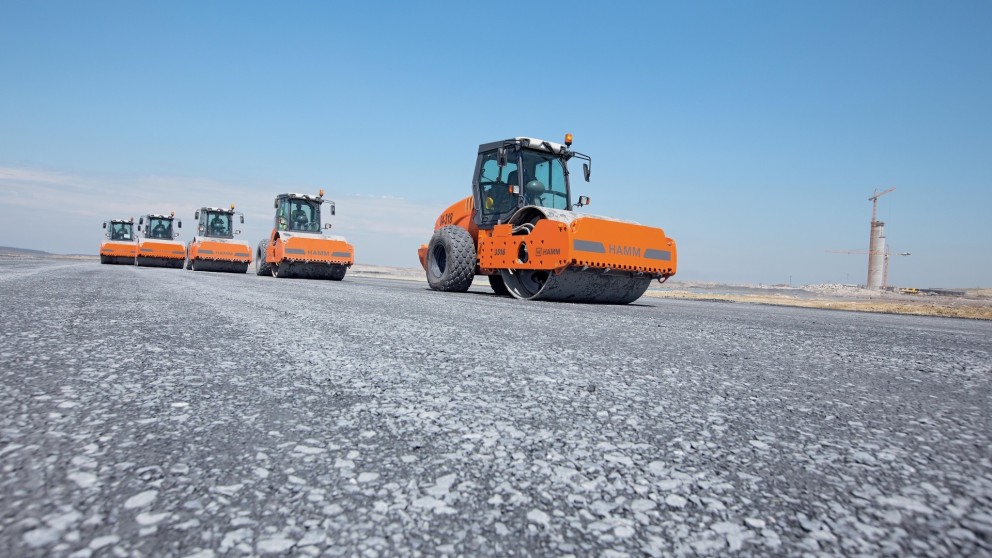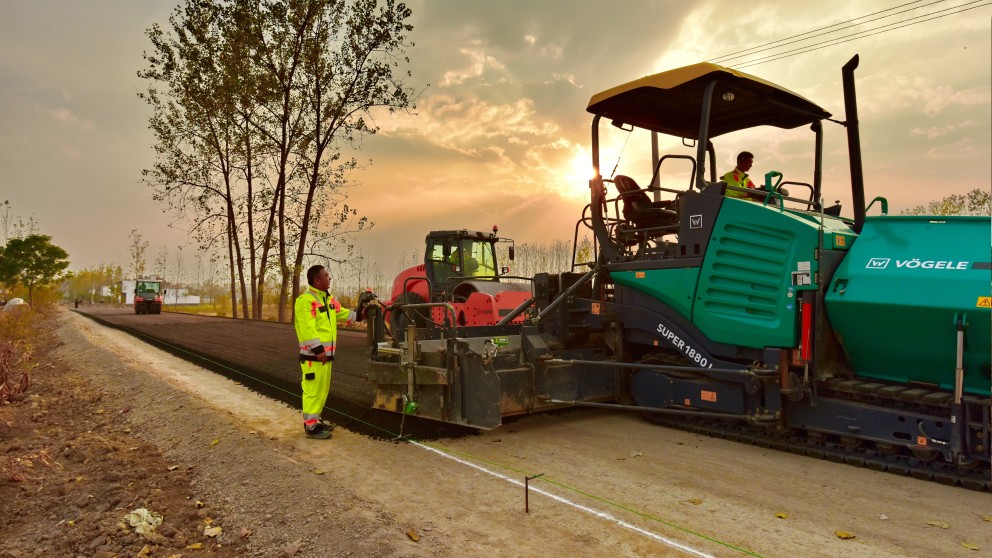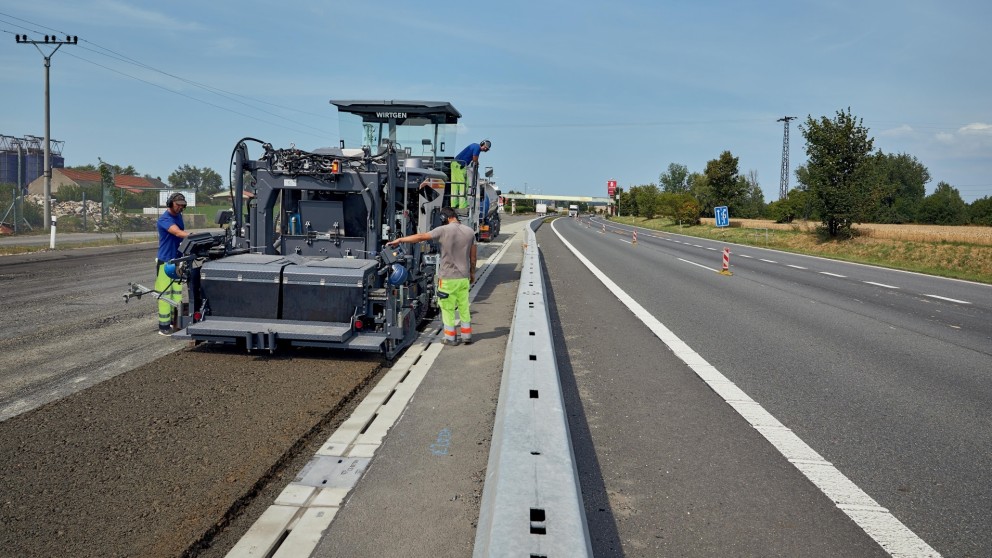Construction of base layers in road construction


The bottom layer essentially comprises an unbound mixture of coarse and fine crushed stone, as well as crushed sand, to achieve the desired load-bearing capacity and absorb traffic loads so that the underlying subgrade is not deformed.
The base course serves as a foundation for the paving. Depending on the stresses to be expected, the road comprises various layers of different thickness in order to withstand the most diverse weather conditions and remain serviceable for many decades.
Roads are exposed to particularly high stresses when the water contained in the pavement structure begins to freeze. Water expands when freezing, which can lead to frost damage that will sooner or later have an impact also on the road surface. This is prevented by a so-called frost blanket which usually consists of a mixture of gravel and sand, supplemented by crushed mineral aggregate. When compacted, these layers of frost-resistant materials conduct water away from the upper pavement layers, reducing tensions very effectively at the same time.
Hamm rollers tackle the toughest jobs, whether they are used for earthworks or – as in the photo – for compacting the water-bound base/cement treated base.
In many cases, a bound base course is overlaid over the unbound base course. Bitumen, cement or lime is predominantly used as binder.
Placing a base layer with a Vögele road paver.
Mixes containing bitumen are referred to as hot-paved or cold-paved asphalt base courses, depending on whether the mix is hot or cold. The base course is said to be hydraulically bound when cement or lime is used as binder.
Paving a hydraulically bound base layer with the W 240 CRi.
When the mineral aggregate mixture is bound with cement or lime, the resulting base layer is called a hydraulically bound base layer. Mineral aggregate mixtures used for this type of base layer consist of uncrushed gravel or coarse aggregate, chippings, and crushed or natural sand. Ever more frequently, these mixes also contain a percentage of recycled construction materials.
Recyclers and soil stabilisers
Slipform pavers
Hamm products
VÖGELE products





